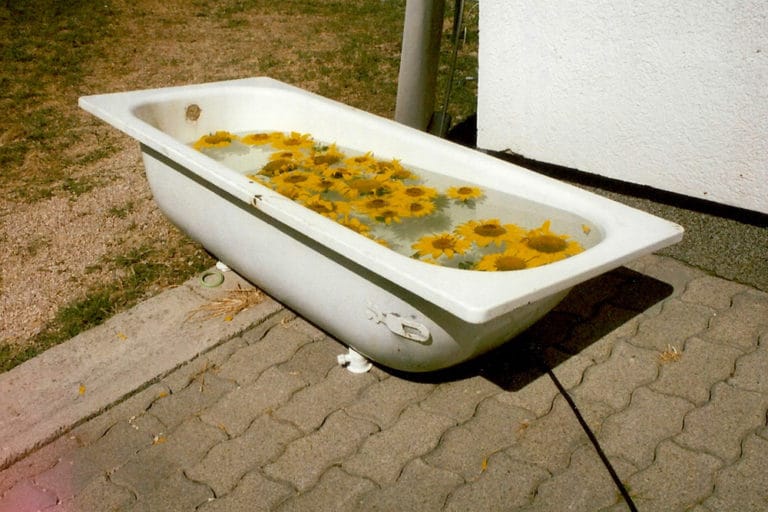A viral Instagram account wants to speak about the Holocaust to Gen Z

The commemoration of and education around the issue of the Holocaust becomes an increasingly complicated task. As survivors die out and the attention span of the younger generation shrinks at a dazzling pace, it gets challenging to keep the stories from that time relevant and relatable. In an attempt to tackle this problem, Israeli high-tech entrepreneur Mati Kochavi and his daughter, Maya, opened an Instagram account in which they sought to document the last months of Eva Hayman, a 13-year old Hungarian Jew who was murdered in the Holocaust. The project, titled Eva’s Story, has so far been watched by millions of viewers and generated a worldwide social-media sensation, while being the subject of both laudatory endorsements and harsh criticism.
The creation of the fake Instagram account had cost the Israeli entrepreneur nearly $5 million to make, and involved roughly 400 actors, extras, and crew members. Shot in Lviv, Ukraine, the production sought to re-create the world of Eva Hayman as it is described in her personal journal, which commences on February 13, 1944 (her 13th birthday) and ends on May 30 of that year, just days before her deportation to Auschwitz. Unlike your typical Holocaust movie, however, this project was filmed exclusively through the lens of Eva’s Instagram story, and is replete, in some sections, with hashtags, GIFs, and emojis.
Following an elaborate media campaign and a teaser that was uploaded to the fake account last week, Eva’s Story was finally released in 70 increments on Wednesday afternoon, right at the onset of Israel’s annual Holocaust Martyrs’ and Heroes’ Remembrance Day. Eva’s last Instagram story, which captures the moment in which she was shoved on a cattle train that would take her to her death, was uploaded to the account on Thursday morning—as sirens were heard throughout Israel, calling for a moment of mourning.
By the time Eva’s last story aired, the account had garnered nearly one million followers and its content had been watched by over 100 million people across the globe. Roughly 200 million Google searches of Eva’s Story were registered on Google and the project had been covered by media outlets in over 50 countries. Among the enthused endorsers of Eva’s Insta account were Israeli Prime Minister Benjamin Netanyahu and the White House, who shared it on its official IG account.
Yet alongside the global hype surrounding the project were countless critiques by individuals who found this initiative offensive and disrespectful. In an Op-Ed for Haaretz newspaper, civics-teacher and musician Yuval Mendelson wrote, “First of all, we are talking about a display of bad taste. Second, and much worse, there will be consequences. The path from ‘Eva’s Story’ to selfie-taking at the gates of Auschwitz-Birkenau is short and steep, and in the end all those tut-tutters and head shakers will join in telling us about the lost and disconnected youth, devoid of values and shameless.”
Mendelson’s opinion of the project was echoed by many others who sensed Eva’s Story encouraged the ‘cheapening’ of the Holocaust, and who believed that depicting her dreadful experience through an Instagram story is simply inappropriate.
The creators of the project, however, maintain an entirely different position, believing that social media can be used as a tool to keep the conversation around the Holocaust alive among the young generation. In an interview for The New York Times, Mati Kochavi stated, “Why disrespectful? It’s the way people communicate. I have no doubt in my mind that young people around the world want to have serious content and be connected in the right way.” In a subsequent interview for Ynet, Kochavi added that, “This is the way to make the Holocaust accessible to the young crowd. Only 2.7 percent of the total discussion about the Holocaust around the world today is initiated by the younger generation, which is a significant decline in comparison to previous years.”
Eva’s Story certainly raises serious questions not only about how to handle the subject of the Holocaust in the post-millennial age and keep future generations aware and engaged, but about how to utilise the various platforms of social media to document and discuss world events and tragedies without trivialising them. It seems that the project’s creators would have dodged some of the criticism launched against them had they not embarked on a glitzy campaign, which included the hanging of massive banners across Israel, depicting a girl’s hand holding an iPhone over barbed-wire against the background of the trademark purple-and-yellow Insta shades. It is clear why many across Israel felt that combining the most populistic and commercial aspects of Instagram with an issue like the Holocaust is both disrespectful and offensive.
One thing is certain, though: social media isn’t going anywhere anytime soon, and Kochavi is right when he says that “This is where the kids are.” It only makes sense then to utilise platforms such as Instagram in order to expose young people to serious content and keep them informed about both historical and current world affairs. It is equally as necessary, however, to ensure that topics such as the Holocaust are handled with extra sensitivity and respect, so as not to, inadvertently, depict them as yet another sensationalist fad.




